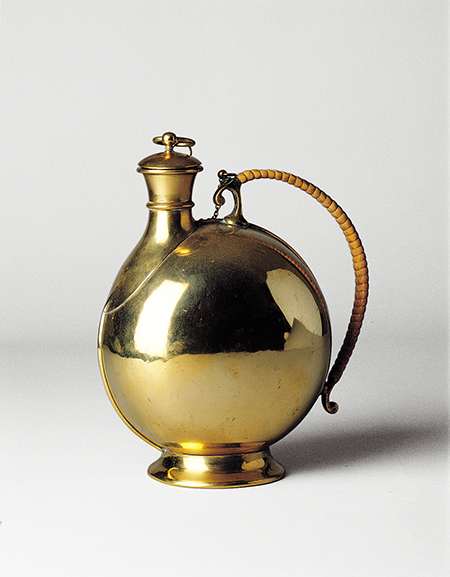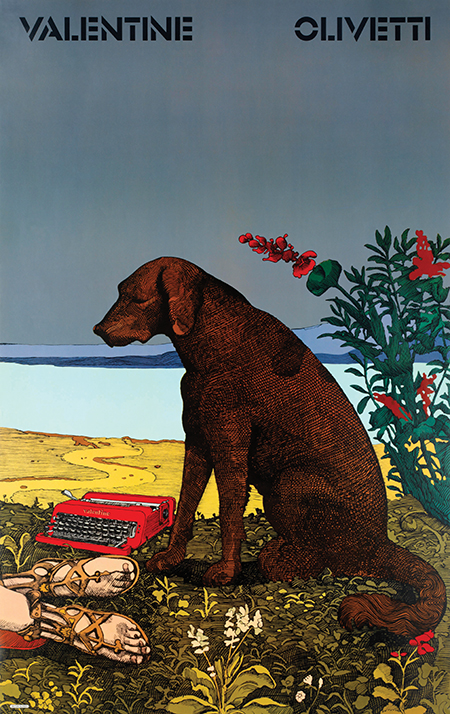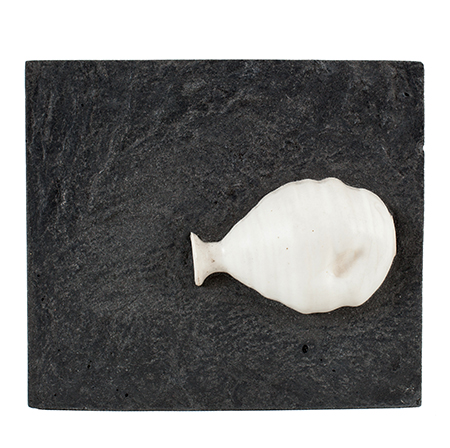By Design
The difference between disciplines
The difference between disciplines

There are toxic words in every field and, when it comes to design, two of the most ominous are ‘sculptural’ and ‘artistic’. Not that there is necessarily anything wrong with design projects exhibiting either quality, but those that are described as doing so seldom do. Instead, they are very likely to be any or all of the following: bland, silly, blingy, pretentious, shoddy, derivative, ugly, ridiculous or unjustifiably expensive. Check out the dodgier booths at a ‘design-art’ fair to see what I mean.
If ‘sculptural’ and ‘artistic’ were simply guilty of being a) inaccurate and b) unwittingly pejorative, I’d be tempted to end the argument by citing a favourite exchange in Game of Thrones in which the fabulously ghastly Tywin Lannister parries his (just ghastly) grandson Joffrey Baratheon’s, ‘I am the king, I will punish you,’ with ‘Any man who must say, “I am the king,” is no true king.’ But, sadly, those adjectives are more damaging, because they also foster the irritatingly pernicious assumption that design is somehow elevated by being likened to art. (It is true that applying the language of art can help ‘design-art’ dealers to convince impressionable collectors to pay more money for their wares, but that’s another matter.) Design is not inferior to art, just different, which prompts the question: why, at a time when artists and art institutions are increasingly absorbed by design, is it becoming increasingly difficult to distinguish critiques of design and material culture by designers from those by artists?
Historically, there was no perceived difference between the two disciplines. Both design and art were lumped together in what the ancient Greeks called technê, together with the crafts, medicine and music. It was not until the renaissance that a distinction emerged and artists were accorded higher social and cultural status than designers and makers. When the first art school, the Accademia e Compagnia delle Arti del Disegno, opened in Florence in 1563, art and design were studied separately. Other schools followed suit, or focused on art, and sometimes architecture, ignoring design.
The gulf between them widened during the industrial revolution when the practice of design was formalized as a means of enabling manufacturers to produce huge quantities of more or less identical products. In the early industrial age, potteries like Josiah Wedgwood’s and Miles Mason’s were considered so thrilling that London intellectuals and socialites conducted manufacturing tours of northern England, while crowds of people flocked to exhibitions of industrial machinery where prizes were awarded to the most ingenious contraptions. Canny industrialists made the most of their allure by persuading famous artists to work for them, as Wedgwood did by commissioning George Stubbs and John Flaxman to paint ornamental patterns. Tellingly, both artists are often described as having ‘designed’ for Wedgwood, when all they really did was decorate his wares. The most important design decisions, relating to the technical specifications and choice of materials, glazes and firing techniques, were made by Wedgwood himself and his modellers, most of whom were locals and had trained with him as teenage apprentices.

By the early 1800s, the infatuation with industry was fading, and the demonology of the ‘dark satanic mills’ began. Manufacturing and everything associated with it was derided as filthy, noxious and destructive. The artists who once clamoured to work for Wedgwood and his ilk were replaced by ‘designer-draughtsmen’, who tended to be poorly paid, powerless and confined to copying historic symbols from books. Even the museums, which were founded in the mid-1800s to raise standards of design in manufacturing, like the Victoria & Albert Museum in London and the Museum of Applied Arts in Vienna, tended to favour the decorative arts. The antipathy towards industry was crystallized in the theories of William Morris, John Ruskin and fellow members of the Arts and Crafts Movement, who championed a revival of rural craftsmanship. Even the efforts of as gifted a designer as Christopher Dresser to develop thoughtful and nuanced products made little impact on the popular stereotype of design as a supine tool of commerce.
The constructivists challenged that cliché in the early 1900s by advocating a more enlightened understanding of design’s potential to create a fairer, more productive society: first in Eastern Europe, then further afield as they settled in other countries. The Hungarian artist and theorist László Moholy-Nagy championed the movement in Germany, as a teacher at the Bauhaus, then in Britain and, finally, in the US. By the 1930s, progressive art curators, such as Alexander Dorner of the Landesmuseum, Hannover, and Herbert Read at the London Gallery, were experimenting with exhibiting design. The US architect-turned-curator Philip Johnson did the same at the Museum of Modern Art, New York, by displaying pistons, springs, propellers and other examples of industrial beauty in the 1934 exhibition ‘Machine Art’. The critics savaged the show, but Johnson acquired 100 of the exhibits for what was to become MOMA’s design collection.
More modern art museums embraced design in the postwar era, including the forerunner of Centre Georges Pompidou in Paris, and the Stedelijk Museum in Amsterdam. Like Johnson, their curators tended to focus on the aesthetic aspects of industrial design. Not that they were unjustified, especially when the objects were as beguiling as Ettore Sottsass’s beautifully resolved electronic products for Olivetti or Dieter Rams’s for Braun, but other arguably more important elements of their designs, such as their cultural impact and relationship to techno-logical change, were often neglected. Even the most radical attempts to interrogate design’s influence on contemporary culture, like ‘This Is Tomorrow’, the multidisciplinary exhibition organized by the Independent Group at the Whitechapel Gallery in 1956, concentrated on its role within consumerism. By doing so, they sustained the popular misconception of design as a styling device deployed to commercial ends, regardless of the environmental or ethical consequences, and emphasized the compromised nature of the industrial design process. Typically, artists were perceived as being free to express themselves in work, which was often, though not always, of their own making, whereas designers were seen as being impeded by countless obstacles from the demands of clients and manufacturers, to the practical constraints of developing things robust enough to withstand daily use.
Even the idea that design was only worthy of cultural consideration if it was deemed aesthetically pleasing was demeaning. It linked design to the antiquated notion of art as striving for perfection at a time when progressive artists were intent on exploring the messier, troubling aspects of life: something that seemed alien to a quest for mass-manufactured beauty. No wonder that when the Welsh cultural theorist Raymond Williams identified the words used most often to discuss culture and society in his 1976 book Keywords, design was not among them, nor was it in the expanded 1983 edition.

Design is no longer so easily ignored, principally because of changes in design practice. Advances in digital technology have enabled designers in every field to define their own objectives and to exercise greater control over their work by eradicating many of the old constraints. As a result, design has become more expressive and polemical, and readier to wrestle with complex social, political and environmental challenges. Even its traditional applications have a renewed urgency, such as ensuring that innovations in science and technology are interpreted in ways that will enhance, rather than impede, our quality of life.
So compelling has design become in its new guise that a growing number of art institutions are expanding their engagement with it, from the Serpentine Galleries in London, to Artists Space, the New Museum and the Metropolitan Museum of Art in New York. Artists, too, are increasingly interested in design and its impact on society. To take two examples from this summer’s shows: Camille Henrot’s ‘The Restless Earth’ at the New Museum examines the internet’s influence on the way we understand the world, and Wolfgang Tillmans is to exhibit ‘Book for Architects’, a photographic project documenting what buildings really look like, as opposed to the glorified imagery of architectural photography, in the ‘Elements of Architecture’ exhibition curated by Rem Koolhaas at this year’s Venice Architecture Biennale.
Designers are pursuing similar objectives by using their work as a research exercise to interrogate design’s role as a powerful, sometimes problematic force. Would you expect an artist or a designer to explore the impact of colonialism and racism on craft tradition? The artist and activist Theaster Gates has done so in his studio pottery workshops and investigations into the role of ethnicity in the ceramics of Dave Drake, and Gates’s fictitious invention, Shoji Yamaguchi, as have the product designers Simone Farresin and Andrea Trimarchi of Studio Formafantasma in Moulding Tradition, a ceramic project in 2010 that analysed the legacy of the Muslim conquest of Sicily in the ninth century and racism in contemporary Italy. Another recent theme for both artists and designers is the mythology of the mid-20th-century Italian furniture designer Carlo Mollino, which has been addressed by the artists Nairy Baghramian and Simon Starling, as well as by the designer-maker, Martino Gamper.

How do the artists’ responses differ from the designers’? They don’t in terms of what really matters, because each is original, challenging and provocative, but there are differences between them. One is that all of the design projects have a functional outcome: usable pots for Formafantasma; tables and chairs for Gamper. Some of the pots made in Gates’s workshops were usable too, but not all of his projects had functional outputs, nor did Starling’s film of Mollino’s furniture, Four Thousand Seven Hundred and Twenty Five (Motion Control / Mollino) (2007) or Baghramian’s sculptural response to it (Tea Room, 2011). As artists, they were free to choose, unlike designers for whom functionality is compulsory. Not that their work needs to be functional in the practical sense, as Moulding Tradition and Gamper’s study of Mollino happen to be, because the definition of function in design is becoming ever more fluid.
Another defining quality of a design project is that it has to relate to design culture to some degree: whether through the application of the process, or references to history, or to contemporary design in the finished work. Just as the process of creating the pots in Moulding Tradition was integral to the evolution of Formafantasma’s thinking, Gamper analyzed his subject by constructing new furniture from discarded components of Mollino’s pieces. Only by doing so could he scrutinize their nuances, whereas Baghramian and Starling studied the same subject by reinterpreting it in different media.
Even so, does it matter whether a work that explores a similar theme to equal effect is described as art or design? Clearly it does to anyone with a strategic reason for choosing a particular discipline, like Gates, whose decision to identify himself as an artist enables him to sell work through commercial galleries, such as White Cube, in order to fund his community housing programme in Chicago. But there are also generic arguments in favour of sustaining the distinction.
One is that analyzing design’s impact on society is very valuable, as it would be for any ubiquitous force that affects every area of our lives, especially one that is as prone to muddles, misconceptions and clichés as design. Designers have a particular perspective to bring to that process, but so do artists, and both approaches are useful in their respective ways.
Moreover, if you believe that design is more than a styling tool, and has the potential to make a useful contribution to society by helping, say, to arrest the environmental crisis or to revitalize the education system, then it follows that we need the best possible designers. The more eclectic, dynamic and challenging the practice of design appears to be, the likelier it will be to attract them, which is why it is not only wrong but self-defeating to describe design in words that suggest it is subservient to art.
























